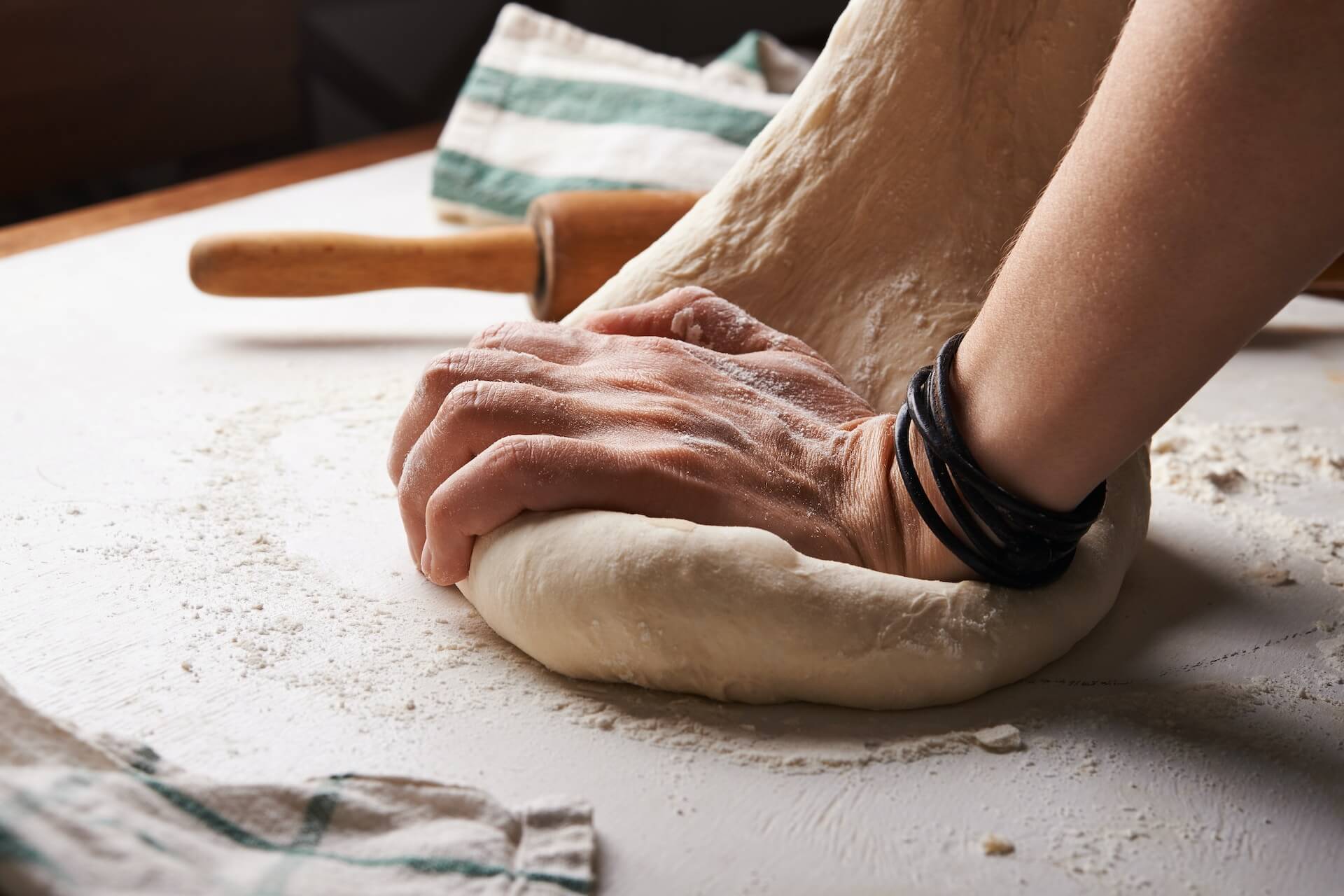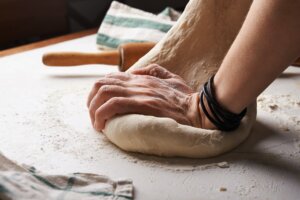
Whether you’re looking for a delicious pizza at a restaurant such as Pequod’s Pizza, or you’d like to make your own pie at home, you expect the crust to be delicious. If you’re making your own pizza, the foundation of your dish is a great crust. To make a great crust, you must first know how to make excellent pizza dough. A common problem many people experience when they make their own pizza is that the dough doesn’t rise.
If your pizza dough isn’t rising, these tips will help you understand why. We also share some advice for improving your dough so you end up with a tasty crust.
Your Dough Doesn’t Have Enough Yeast

Dough by Nadya Spetnitskaya is licensed with Unsplash License
There are several reasons why the yeast in your dough may not ferment adequately. Perhaps you didn’t add enough yeast to the dough and should increase the amount you use in your next batch. This process makes more sense when you understand yeast’s role in developing your dough. Yeast eats sugars from flour, converting it to carbon dioxide. This process increases the volume of the dough, but you need adequate yeast for it to work.
Generally, you might expect homemade pizza dough to rise quickly — within two hours — so you’ll need to add more yeast than you would with some other bread recipes. Keep in mind that the temperature of your kitchen can also impact how much yeast you need. If your home is relatively cold, you’ll want to use more yeast for the dough to rise quickly. In a warmer kitchen, you don’t need as much yeast.
The Dough Is Too Cold or Too Hot
If your dough is cold right after you mix it, fermentation isn’t going to happen easily. You might need to start your dough with warm liquid, and you should ensure that you don’t store the dough at too cold a temperature. If you add cold water to the yeast, you should see some action eventually, but the process may be slow.
If you’ve already added cold water to the mix and want to speed things up a bit, you may have success with the help of your oven. Keep the dough wrapped and place it on the middle rack of your oven. Boil a cup of water and place it on the rack underneath the dough. Close the oven door and let the heat warm up your dough. Remember: you don’t need to turn on your oven for this to work.
Of course, pizza dough can also become too hot, which prevents the dough from rising correctly as well. Hot water can kill the yeast quickly, so avoid too much heat early in the process. In most cases, room-temperature dough is perfect. Lukewarm water from your faucet is generally fine and won’t kill the yeast.
The Yeast Is Too Old
Old or dead yeast can cause problems for your pizza dough as well. Old yeast is no longer active, so it won’t feed on the flour to create that fluffy dough you want. The shelf life of yeast varies based on its type. For example, fresh yeast is good for a matter of weeks, whereas dry yeast can last much longer.
Before using the yeast, check that it’s still good. You can do this by filling a glass of warm water with a teaspoon of sugar and a teaspoon of yeast. After about 10 minutes, the yeast should start to foam if it’s still good to use.
The Dough Isn’t Mixed Well
If your dough isn’t rising, but you’re certain you used the correct ingredients, you may not have kneaded the dough enough. Each ingredient in your dough is crucial. The yeast feeds on the flour to rise, and the water allows the yeast to move faster. Salt can slow down the yeast’s movement, so having a higher concentration of salt in some areas will cause the dough to rise more slowly.
To improve gluten development, you may need to spend some more time kneading the dough so that the gas built by the yeast feeding on sugar won’t escape. Kneading dough is no simple process, and you may find that you must knead it for 15 minutes or longer.
Too Much Salt
If you’ve tried to knead your dough for longer, you may have added too much salt to the mix. Adding too much salt can kill the yeast in your dough, which means you won’t see any action, even if you follow all the other suggestions listed here. While salt is an important ingredient, less may be more in this case.
The Dough Needs To Sit Longer
In some cases, the dough just hasn’t had enough time to rest. While it may be hard to wait for your dough to rise, remember that a slow-rising dough is going to have excellent flavor and consistency. If you’re making a fast-rising dough, you likely need to let the dough sit for a couple of hours.
The Water Is Bad
If you don’t have good tap water in your area, you may find that it impacts your yeast. Your dough may not rise because your water is too hard or has added chemicals that impact fermentation. If you think your water is impacting the quality of your dough, try using bottled water instead. Just make sure that it’s not too cold if it’s straight from the refrigerator.
Pizza Dough Isn’t Always Simple
Although making dough for pizza requires just a few simple ingredients, the process is heavily affected by the elements: temperature, humidity, water and yeast quality, and more. It’s easy to be disappointed when you’ve put a significant amount of work into your pizza dough, only to find that it won’t rise several hours later. If you’ve tried everything and it looks like pizza isn’t on the menu at home, you can order from Pequod’s Pizza to get your fix of mouthwatering dough, cheese, veggies, meat, and more in Chicago tonight.